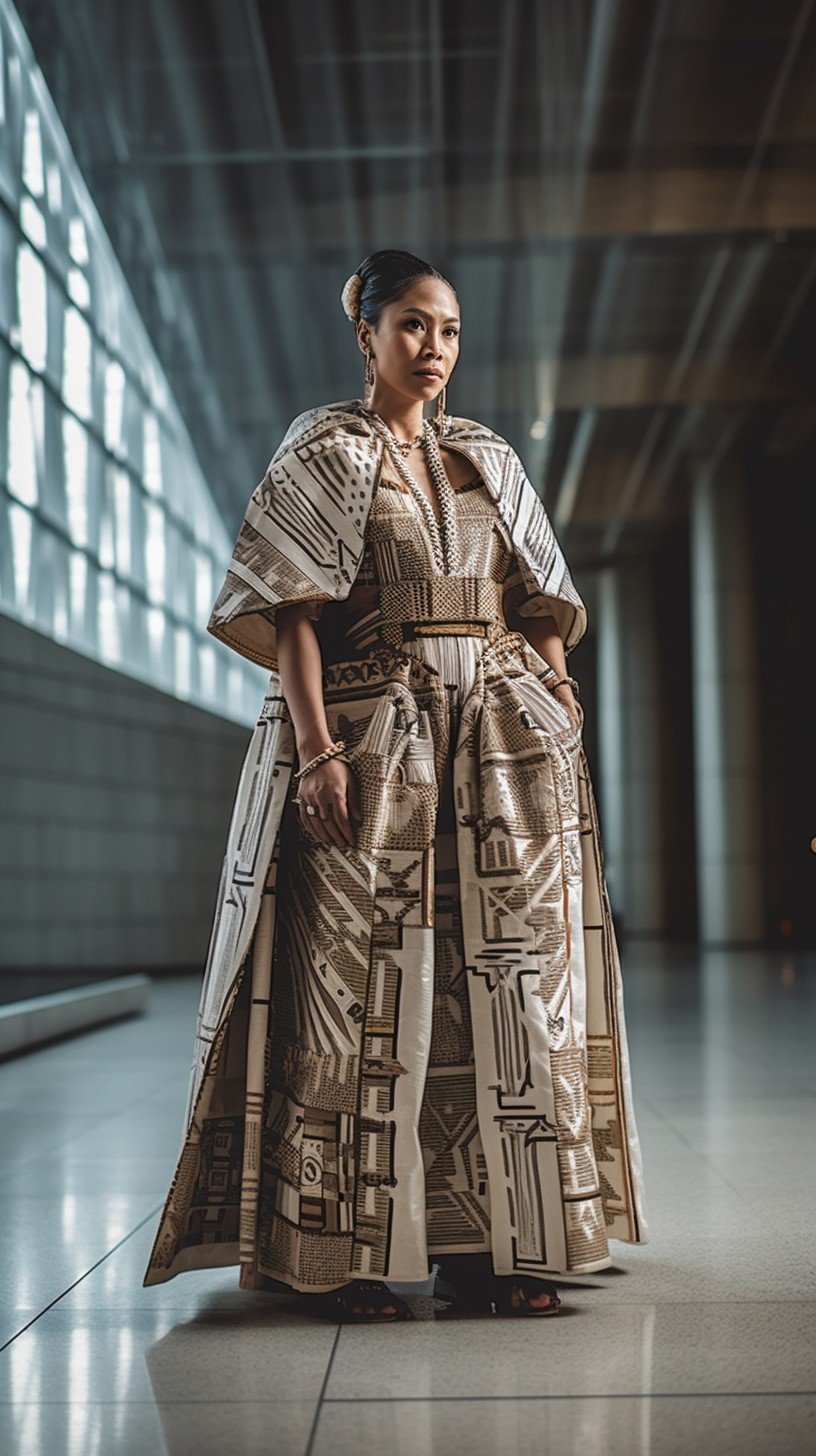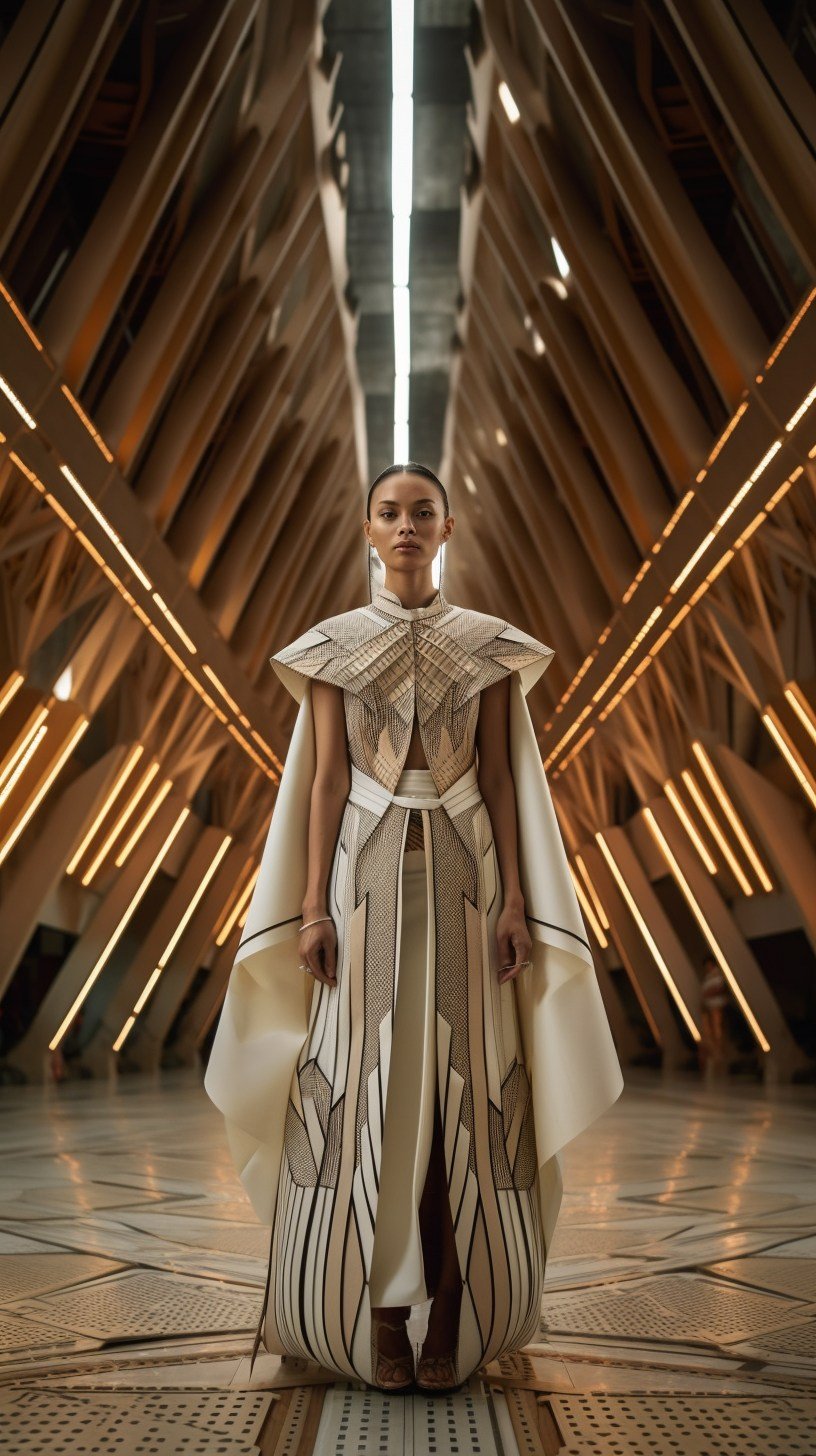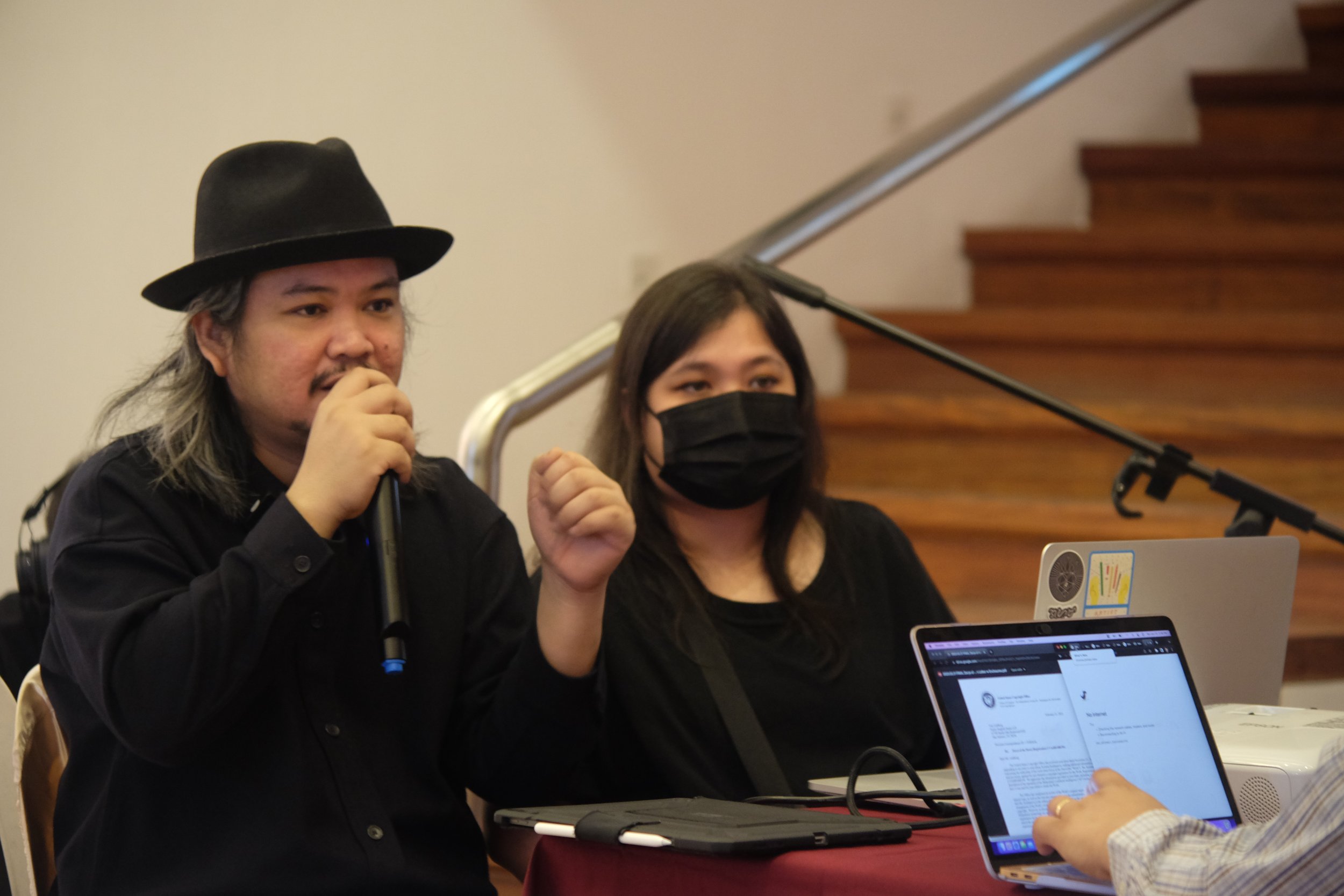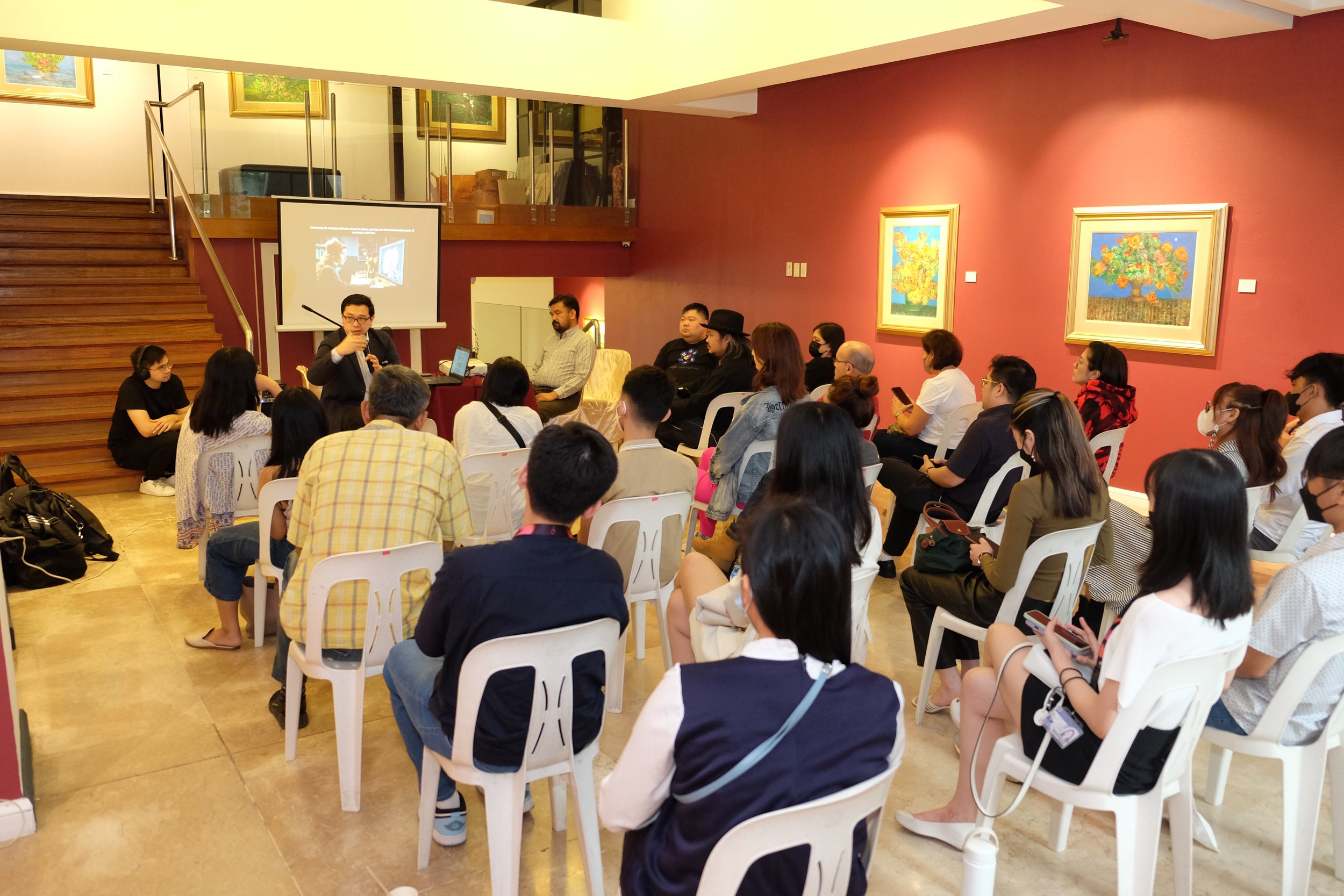Where Art Meets Algorithm: AI and Art Today
From Twitter discourses to national roadmaps, efforts to ponder the place of Artificial Intelligence (AI) in our future abound.
Written by Chesca Santiago
August 1, 2023
Patrick Cabral’s interpretation of the futuristic Filipina dress, made with AI programs Stable Diffusion and Midjourney. Image Credit: Patrick Cabral.
From Twitter discourses to national roadmaps, efforts to ponder the place of Artificial Intelligence (AI) in our future abound. Yet shun or welcome it, AI has already staked its claim in our present, occupying an increasingly significant role in various facets of our lives.
And of course, what better place for AI to gain its footing than in humanity’s locus of possibilities—art. Last 10 June 2023, Fundacion Sansó held the second iteration of its Tech Talks with ART X A.I. – Perspectives on Artificial Intelligence and Art. Moderated by Alvin Edwald Chan, the talk was a discussion on the current impact of AI from the perspective of featured artist Patrick Cabral, psychologist Miguel Valdez, and lawyer Atty. Marnie Tonson, who shared insights based on the fields of art, psychology, and law, respectively.
Artist Patrick Cabral shared his journey with generative art and AI. Image Credit: Fundacion Sansó.
Bringing art beyond its bounds
For multidisciplinary artist Patrick Cabral, AI has served as a vehicle for his creative explorations, helping him transcend what were once the bounds of his artistic tools. Starting out as a web designer before venturing into the arts, Cabral’s current affinity with the maths and codes of AI fit in with the natural progression of his career. Before AI, Cabral was already involved in generative art—code-based artworks produced by employing “explicit programming instructions to produce a controlled set of outcomes.” Here, organic patterns, as in fabrics, are translated into mathematical data for 3D modeling. Although it did help Cabral produce his textile patterns, Cabral would soon learn the limitations of generative art, which constantly requires professional assistance when operating.
Only AI would match up with the pace of Cabral’s ingenuity. While AI still falls under the umbrella concept of generative art, AI tools can be trained to produce outcomes according to their own parameters. Here, Cabral is no longer limited to the rules of generative design—AI is here to bring his ideas to the screen, as long as he trains it. Just recently, Cabral made waves on social media for his AI-generated futuristic take on the Filipino dress and interpretations of pre-colonial Philippine kingdoms, both designed from years of painstakingly building his own AI system.
Psychologist Miguel Valdez dissected the psychology behind art and AI. Image Credit: Fundacion Sansó.
The psychology behind AI
Beginning his talk with a three-minute spiel from ChatGPT, psychologist Miguel Valdez probed what draws the human mind to AI. Valdez approached this by turning to art, which he argued is enjoyed by humans for the same reason as AI—novelty, self-expression, and perception. For Valdez, it is through art, and by extension AI, that we are able to find novel discoveries, convey ideas that words cannot share, and experience the world in the way that others do. Ultimately, just like art, AI is a “tool to explore the world in elements that we have never tried before,” explained Valdez.
Atty. Marnie Tonson shared his skepticism towards the future of the law with AI. Image Credit: Fundacion Sansó.
Authorship in the midst of AI
Inevitably, the speed at which AI advances has posed challenges for the law. In his talk, Atty. Marnie Tonson delved into the legal concerns surrounding AI, paying particular attention to questions of authorship and ownership when it comes to AI-generated artworks. Current legal provisions grant creatorship only to natural persons. Thus, designating AI as an author and an owner is impossible under the law.
On view, from left to right: Patrick Cabral, Atty. Marnie Tonson, Alvin Edwald Chan, and Miguel Valdez at Fundacion Sansó during ART X A.I. Image Credit: Fundacion Sansó.
Yet the Philippines has yet to witness a legal precedent for AI, and Atty. Tonson is doubtful of the law’s capacity to catch up with its expansion. As he shares, “The law always looks backward while technology always looks forward,” for as it “tries to canal or put activities into channels… technology is about overcoming walls and building bridges.”
As the discussion from ART X A.I. – Perspectives on Artificial Intelligence and Art has affirmed, whatever the fate of AI in our future remains to be seen. Yet as far as art, psychology, and the law are concerned, the mark AI has left on our present is doubtless already far-reaching.






